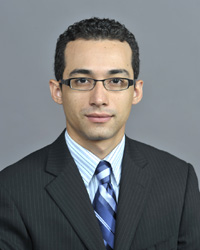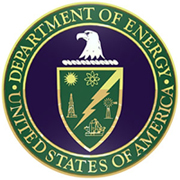
Mario Vargas (Mechanical Engineering)
About DOE Fellow
Mario Vargas completed his Bachelor’s degree in Mechanical Engineering at Florida International University and will begin pursuing a Master’s degree in Mechanical Engineering in the Spring 2010 term. His Master of Science degree will focus on the area of Manufacturing and Design. Mario has also successfully completed his studies and fulfilled the requirements for his professional certification in Robotics Engineering from the College of Continuing and Professional Studies at the College of Engineering and Computing. Mario is currently the Chair of the American Society of Mechanical Engineers – FIU Student Section (ASME-FIU). His interests include robotics, renewable energy, and safe decontamination and decommissioning by employing automated systems. For the past four (4) years, Mario has been working at Boeing as a structural analysis engineer.
DOE Related Projects:
Nuclear Stack Characterization:
Mario is currently working on testing a wipe technology that will be used on a robotic mechanism used to conduct surveys for physical and chemical characterization of contaminated nuclear stacks. He has also worked with Mr. William Mendez on creating a three-dimensional model of a mechanism that can conduct surveys holding multiple wipes.
Whirling Nozzle Testing:
Mario has also worked on the whirling nozzle test plan which includes testing a remote controlled platform that carries a 360° whirling nozzle that coats a hot cell mock-up facility. The main purpose of this project is to create an inexpensive alternative that transports the nozzle into the room. The hot cell represents a contaminated room that needs to be coated with a fixative that keeps the surface contamination on the wall. The platform aids in reducing the amount of time workers needs to be present inside a contaminated room.
 Hot Cell before Testing
Hot Cell before Testing
.jpg) Hot Cell during Testing
Hot Cell during Testing
.jpg) Hot Cell after Testing
Hot Cell after Testing
In-Tank Solids Monitor (ITSM):
The U.S. DOE Hanford Site has the largest number of High-Level Waste (HLW) storage tanks and the largest volume of HLW in the United States. During retrieval of waste over the years, there have been several transfer pipelines that have been plugged. In order to avoid plugged transfer lines it is critical to continuously monitor the weight-percent solids in the pipeline. The monitoring can alleviate the potential for pipeline plugging by providing operators with real-time measurements on weight-percent solids, allowing them to adjust transfer parameters as needed. Mario’s work has involved creating three dimensional models of the components that make up the ITSM, which include most of the tubing configurations and their pipe fittings, junction boxes, and pressure transducers. He has also created numerous alternative models of the ITSM by varying configurations to best fit its components.
